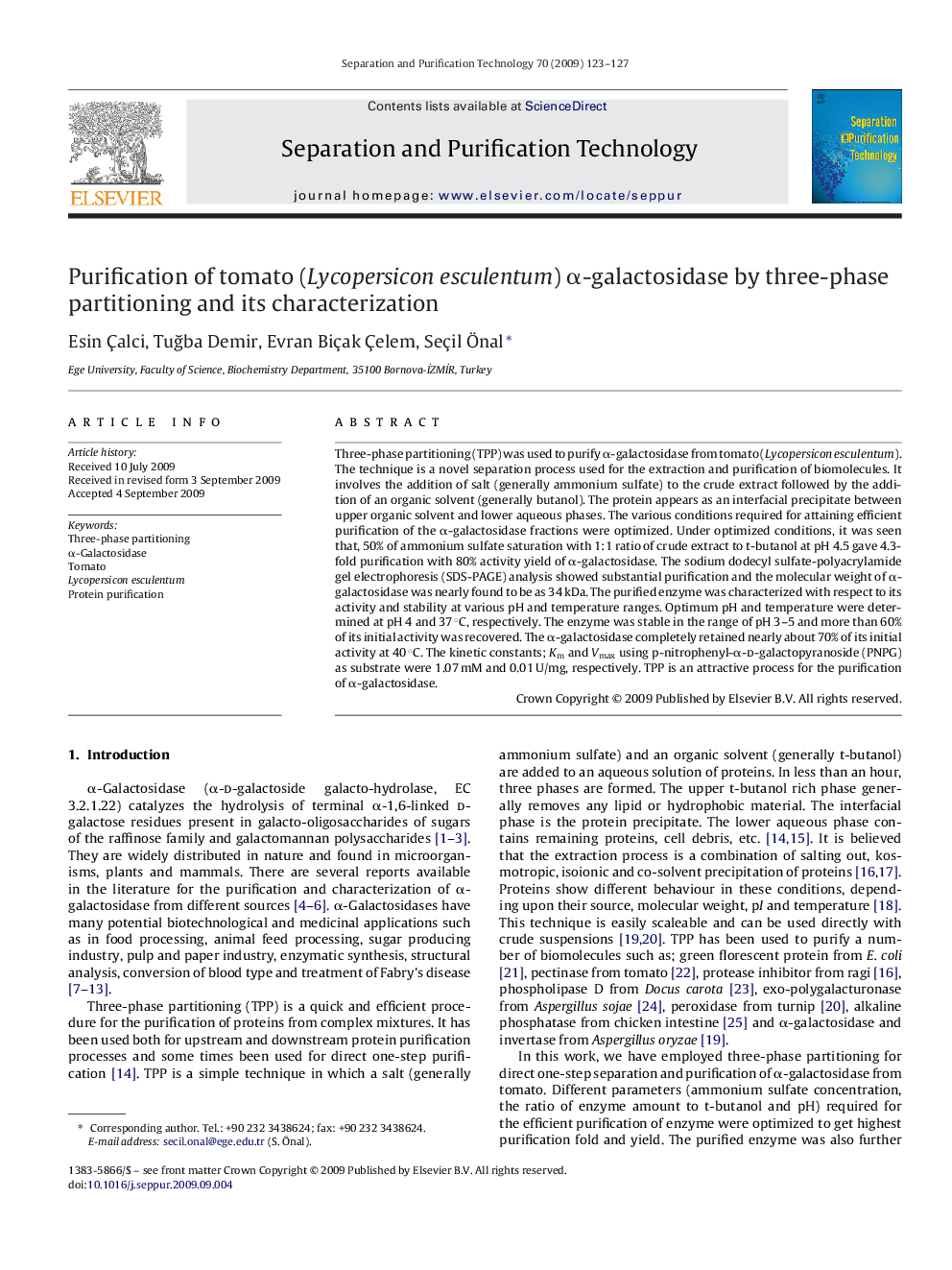| Article ID | Journal | Published Year | Pages | File Type |
|---|---|---|---|---|
| 643395 | Separation and Purification Technology | 2009 | 5 Pages |
Three-phase partitioning (TPP) was used to purify α-galactosidase from tomato (Lycopersicon esculentum). The technique is a novel separation process used for the extraction and purification of biomolecules. It involves the addition of salt (generally ammonium sulfate) to the crude extract followed by the addition of an organic solvent (generally butanol). The protein appears as an interfacial precipitate between upper organic solvent and lower aqueous phases. The various conditions required for attaining efficient purification of the α-galactosidase fractions were optimized. Under optimized conditions, it was seen that, 50% of ammonium sulfate saturation with 1:1 ratio of crude extract to t-butanol at pH 4.5 gave 4.3-fold purification with 80% activity yield of α-galactosidase. The sodium dodecyl sulfate-polyacrylamide gel electrophoresis (SDS-PAGE) analysis showed substantial purification and the molecular weight of α-galactosidase was nearly found to be as 34 kDa. The purified enzyme was characterized with respect to its activity and stability at various pH and temperature ranges. Optimum pH and temperature were determined at pH 4 and 37 °C, respectively. The enzyme was stable in the range of pH 3–5 and more than 60% of its initial activity was recovered. The α-galactosidase completely retained nearly about 70% of its initial activity at 40 °C. The kinetic constants; Km and Vmax using p-nitrophenyl-α-d-galactopyranoside (PNPG) as substrate were 1.07 mM and 0.01 U/mg, respectively. TPP is an attractive process for the purification of α-galactosidase.
